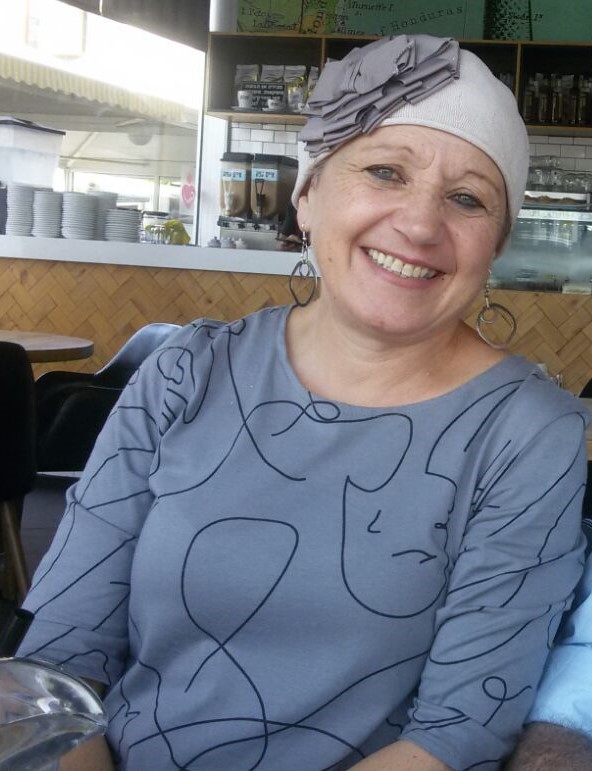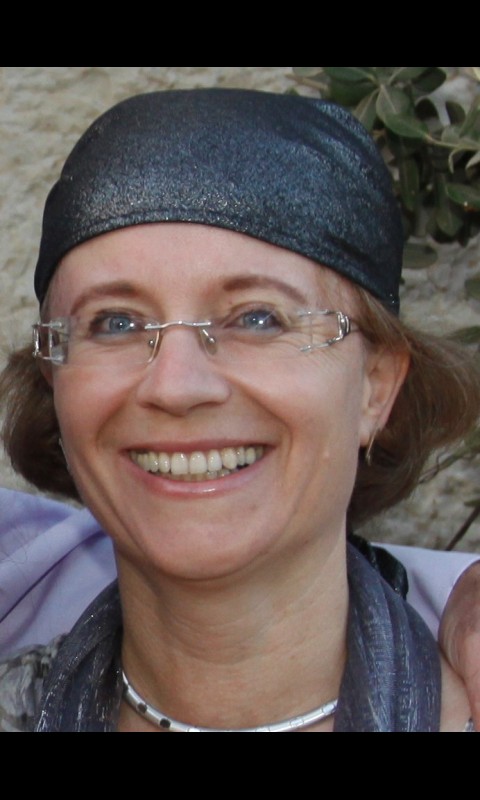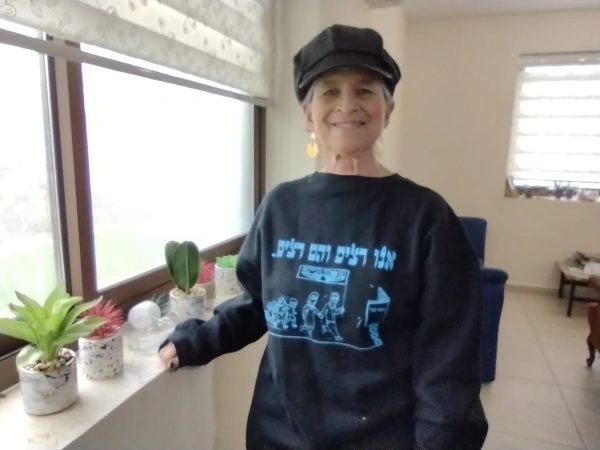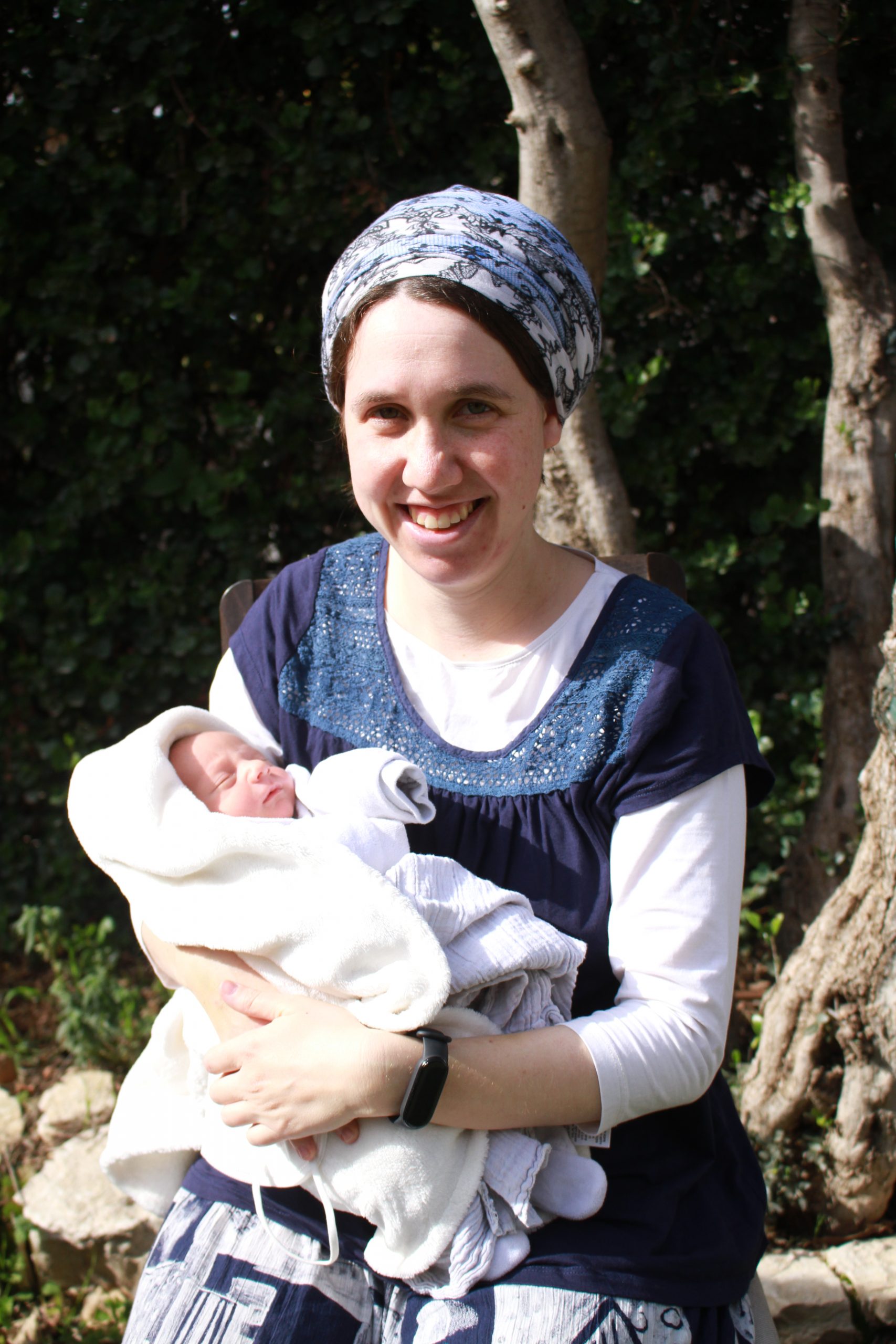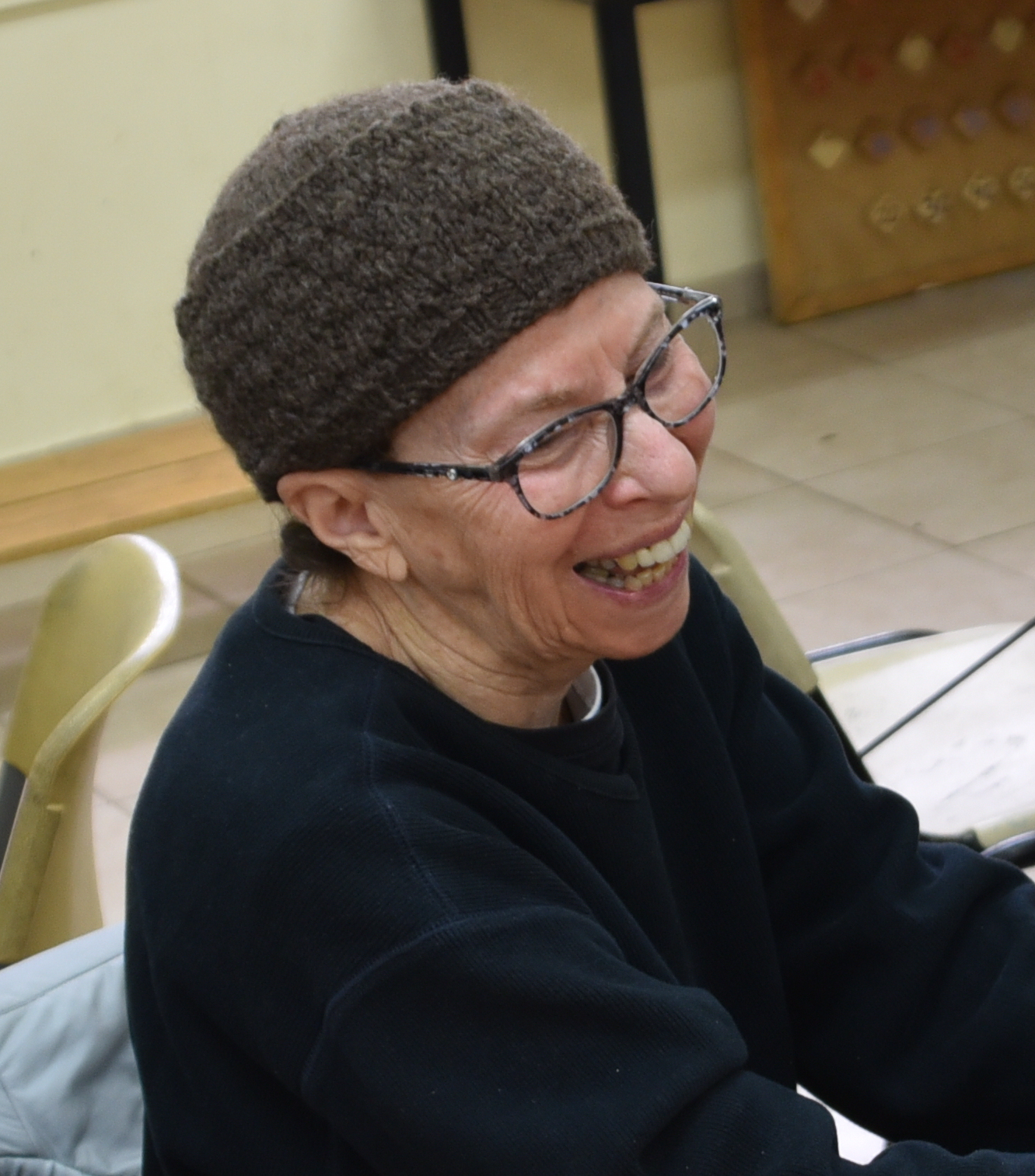איזה מדיה של פירכוס (סימני חיות) נדרשת להתיר שחיטה במסוכנת? באיזה שלב בשחיטה צריך לראות סימני חיות בבהמה? האם אפשר לשחוט בהמה של עובד כוכבים? האם צריך לחשוש שזה לעבודה זרה ואסור בהנאה?
לימוד השבוע מוקדש ע”י טינה לם לע”נ יצחק מאיר בן הרב צבי אריה ואסתר בתיה.
רוצים להקדיש למידה? התחל כאן:
לימוד השבוע מוקדש ע”י טינה לם לע”נ יצחק מאיר בן הרב צבי אריה ואסתר בתיה.
העמקה
רוצה להבין מה באמת קורה מתחת לפני השטח של הסוגיה?
שיעורים, פודקאסטים והרחבות של מיטב המורות שלנו יפתחו לך עוד זוויות וכיווני חשיבה.
חדשה בלימוד הגמרא?
זה הדף הראשון שלך? איזו התרגשות עצומה! יש לנו בדיוק את התכנים והכלים שיעזרו לך לעשות את הצעדים הראשונים ללמידה בקצב וברמה שלך, כך תוכלי להרגיש בנוח גם בתוך הסוגיות המורכבות ומאתגרות.
פסיפס הלומדות שלנו
גלי את קהילת הלומדות שלנו, מגוון נשים, רקעים וסיפורים. כולן חלק מתנועה ומסע מרגש ועוצמתי.
חולין לח
גועה והטילה ריעי וכשכשה באזנה הרי זה פירכוס אמר להו אצטריכא ליה לאבא לאזוזי אוני שאני אומר כל שאינו דברים שהמיתה עושה
If the animal lows, or excreted excrement, or wiggled its ear during the slaughter, that is a convulsion, and the slaughter renders eating the flesh of the animal permitted. Shmuel said to them: Is it necessary according to Abba, i.e., Rav, for the animal to move its ears during the slaughter, which requires a considerable life force? As I say: Any movements of the animal that are not matters that the death of the animal engenders are convulsions sufficient to render the slaughter valid.
מאי נינהו דברים שהמיתה עושה אמר רב ענן לדידי מפרשא לי מיניה דמר שמואל היתה ידה כפופה ופשטתה דבר שהמיתה עושה פשוטה וכפפה דברים שאין המיתה עושה
The Gemara asks: What are matters that the death of the animal engenders? Rav Anan said: This was explained to me from Master Shmuel himself: If the animal’s foreleg was bent, and the animal straightened it, that is a matter that the death of the animal engenders. But if its foreleg was straight and the animal bent it, that is among the matters that the death of the animal does not engender and is a convulsion sufficient to render the slaughter valid.
מאי קמ”ל תנינא בהמה דקה שפשטה ידה ולא החזירה פסולה שאינה אלא הוצאת נפש הא החזירה כשרה
The Gemara asks: What is Shmuel teaching us with that statement? We already learn in the mishna: The slaughter of a small animal that during its slaughter extended its foreleg that was bent and did not restore it to the bent position is not valid, as extending the foreleg is nothing other than part of the natural course of removal of the animal’s soul from its body and not a convulsion indicating life. But one may infer that if the animal does restore its foreleg to the bent position, that indicates life and the slaughter is valid.
אי ממתני’ הוה אמינא דוקא דכייפה ופשטה והדר כייפה לה אבל פשוטה וכפפתה לא קמ”ל
The Gemara answers: If the halakha is learned from the mishna alone, I would say that it is specifically in a case where the animal’s foreleg had been bent, and the animal now straightens it and then bends it, that the slaughter is valid. But if the foreleg had been straight and the animal bent it, the slaughter is not valid. Therefore, Shmuel teaches us that if its foreleg was straight and the animal bent it; that is a convulsion sufficient to render the slaughter valid.
מיתיבי ר’ יוסי אומר היה ר”מ אומר גועה בשעת שחיטה אין זה פירכוס ר”א ברבי יוסי אומר משמו אפילו הטילה ריעי וכשכשה בזנבה אין זה פירכוס קשיא גועה אגועה קשיא ריעי אריעי
The Gemara raises an objection from a baraita to Rav’s statement cited earlier. Rabbi Yosei says that Rabbi Meir would say: If an animal lows during its slaughter, that is not a convulsion sufficient to render the slaughter valid. Rabbi Elazar, son of Rabbi Yosei, says in the name of Rabbi Yosei: Even if the animal excreted excrement or wagged its tail, that is not a convulsion sufficient to render the slaughter valid. The Gemara now clarifies: Rabbi Yosei’s statement in the baraita that if an animal lows it is not a convulsion sufficient to render the slaughter valid is difficult, as it contradicts the statement of Rav that if an animal lows it is a convulsion. And Rabbi Elazar’s statement in the baraita that if an animal excreted excrement it is not a convulsion sufficient to render the slaughter valid is difficult, as it contradicts the statement of Rav that if an animal excreted excrement it is a convulsion.
גועה אגועה לא קשיא הא דעבי קלה הא דעמי קלה ריעי אריעי נמי לא קשיא כאן בשותתת כאן במתרזת
The Gemara answers: The apparent contradiction between the opinion that when an animal lows it is a convulsion and the opinion that when an animal lows it is not a convulsion is not difficult. This opinion, that it is a convulsion, is referring to a case where the animal’s voice is rich and powerful, a clear indication of life; that opinion, that it is not a convulsion, is referring to a case where the animal’s voice is muted, which is not an indication of life. The apparent contradiction between the opinion that when an animal excreted excrement it is a convulsion and the opinion that when an animal excreted excrement it is not a convulsion is also not difficult. Here, the opinion that it is not a convulsion is referring to a case where the animal expels the excrement in a trickle. That is not an indication of life. There, the opinion that it is a convulsion is referring to a case where the animal expels the excrement with force. That is an indication of life.
אמר רב חסדא פירכוס שאמרו בסוף שחיטה מאי בסוף שחיטה באמצע שחיטה לאפוקי תחלת שחיטה דלא
§ The Gemara continues its definition of convulsion that indicates life. Rav Ḥisda said: I was taught that the convulsion that the Sages said is an indication of life is a convulsion at the conclusion of the act of slaughter. Rav Ḥisda elaborates: What is the meaning of: At the conclusion of the act of slaughter? It means even in the midst of the slaughter. The Sages said that it must be at the conclusion of the slaughter only to exclude convulsions at the beginning of the act of slaughter, which are not an indication of life.
אמר רב חסדא מנא אמינא לה דתנן בהמה דקה שפשטה ידה ולא החזירה פסולה אימת אילימא בסוף שחיטה כל היכי תיחי ותיזיל אלא לאו באמצע שחיטה
Rav Ḥisda said: From where do I say that a convulsion in the midst of the act of slaughter is an indication of life? It is from the mishna, as we learned: The slaughter of a small animal that when being slaughtered extended its foreleg that was bent and did not restore it to the bent position is not valid, as extending the foreleg is only part of the natural course of removal of the animal’s soul from its body and not a convulsion indicating life. Rav Ḥisda elaborates: When did the animal extend its foreleg but not restore it? If we say that it occurred at the conclusion of the slaughter, must the animal continue living for so extended a period that it restores its leg to its bent position after the slaughter is complete? Is the slaughter truly not valid otherwise? Rather, is it not that the mishna is referring to a case where the animal extends its foreleg in the middle of the slaughter? If so, then when it restores its leg as well, it is considered a convulsion that indicates life.
א”ל רבא לעולם בסוף שחיטה שאני אומר כל שאינה עושה כן בסוף שחיטה בידוע שנשמתה נטולה הימנה קודם לכן
Rava said to Rav Ḥisda: That is no proof. Actually, one could explain that the mishna is referring to a case where the animal extends its foreleg but did not restore it to the bent position at the conclusion of the slaughter, as I say with regard to any animal that does not do so at the conclusion of the slaughter, it is known that its soul was taken from it before that moment, and it was not alive.
ר”נ בר יצחק אמר פירכוס שאמרו בתחלת שחיטה
Rav Naḥman bar Yitzḥak said: The convulsion that the Sages said is an indication of life is a convulsion even at the beginning of the act of slaughter.
אמר ר”נ בר יצחק מנא אמינא לה דתנן אמר ר”ש השוחט בלילה ולמחר מצא כתלים מלאים דם כשרה שזינקה וכמדת ר”א ואמר שמואל כותלי בית שחיטה שנינו אי אמרת בשלמא בתחלת שחיטה שפיר אלא אי אמרת בסוף שחיטה ליחוש דלמא בתחלת שחיטה זינקה
Rav Naḥman bar Yitzḥak explained further and said: From where do I say that this is so? It is from the mishna, as we learned that Rabbi Shimon says: In the case of one who slaughters at night and the next day he awoke and found walls full of blood, the slaughter is valid, as it is clear that the blood spurted, and this is in accordance with the rule of Rabbi Eliezer. And Shmuel said with regard to the walls mentioned in the statement of Rabbi Shimon: It is the walls of the place of the slaughter, i.e., the walls of the neck, not the walls of the house, that we learned. Granted, if you say that a convulsion even at the beginning of the act of slaughter is an indication of life, this works out well. But if you say that a convulsion is an indication of life only at the conclusion of the act of slaughter, let us be concerned that perhaps the blood spurted onto the walls of the neck at the beginning of the act of slaughter, and there was no indication of life.
ודלמא שאני זינוק דעדיף
The Gemara rejects that proof. But perhaps spurting is different, as it is superior as an indication of life to extending or bending a foreleg, and therefore, although extending or bending a foreleg is a sufficient indicator of life only at the conclusion of the act of slaughter, spurting is a sufficient indicator even at the beginning of the act of slaughter.
ומי עדיף והתנן ר”א אומר דייה אם זינקה קל מדרבן גמליאל ועדיף מדרבנן
The Gemara asks: And is spurting superior? But didn’t we learn in the mishna: Rabbi Eliezer says it is sufficient if blood spurted from the neck, indicating that spurting of blood is a less substantive indication of life than those indications mentioned in the statement of Rabban Gamliel, who requires that the animal convulse with its foreleg and with its hind leg? The Gemara answers: Rabbi Eliezer’s requirement of spurting is less substantive than the requirements of Rabban Gamliel as an indication of life, but superior to the requirement of the Rabbis as an indication of life, where the Rabbis require that the animal convulse either with its foreleg or with its hind leg.
אמר רבינא אמר לי סמא בר חילקאי אקשי בה אבוה דבר אבוברם ואמרי לה אחוה דבר אבוברם ומדרבנן מי עדיף והא תנן וחכמים אומרים עד שתפרכס או ביד או ברגל
Ravina said: Samma bar Ḥilkai said to me that the father of bar Abuveram, and some say that it was the brother of bar Abuveram, raises a difficulty: And is blood spurting superior to the requirement of the Rabbis as an indication of life? But didn’t we learn in the mishna: And the Rabbis say: It is permitted only in a case where it convulses with its foreleg or with its hind leg, or in a case where it wags its tail?
רבנן אהייא קיימו אילימא אדר”ג כיון שפירכסה מיבעי ליה
Ravina elaborates: To which statement of the tanna’im in the mishna do the Rabbis stand and respond? If we say that they are responding to the statement of Rabban Gamliel, who requires that the animal convulse with its foreleg and with its hind leg, the Rabbis should have said: Once the animal convulsed with its foreleg or with its hind leg or it wagged its tail, indicating that this is sufficient.
אלא פשיטא אדר”א ואי עדיף מאי עד
Rather, it is obvious that the Rabbis are responding to the statement of Rabbi Eliezer. And if Rabbi Eliezer’s opinion is superior to that of the Rabbis as an indication of life, what is the meaning of: It is permitted only in a case where it convulses with its foreleg or with its hind leg or it wags its tail? In that case too, the Rabbis should have said: Once the animal convulses with its foreleg or with its hind leg or it wags its tail. Apparently, blood spurting is a less substantive indication of life, and the proof of Rav Naḥman bar Yitzḥak remains valid: If spurting at the beginning of the act of slaughter is a sufficient indication of life to render the slaughter valid, then all the more so, extending and bending a limb are also sufficient indications of life.
רבא אמר פירכוס שאמרו בסוף שחיטה אמר רבא מנא אמינא לה דתניא שור
Rava said: The convulsion that the Rabbis said is an indication of life is a convulsion at the conclusion of the act of slaughter. Rava said: From where do I say that this is the case? It is as it is taught in a baraita with regard to the verse: “When a bull or a sheep or a goat is born, it shall be seven days under its mother; and from the eighth day and onward it may be accepted for an offering to the Lord” (Leviticus 22:27). The phrase “a bull
(ויקרא כב, כז) או כשב פרט לכלאים או עז פרט לנדמה כי יולד פרט ליוצא דופן שבעת ימים פרט למחוסר זמן תחת אמו פרט ליתום
or a sheep” is to the exclusion of an animal born to parents of diverse kinds, which may not be brought as an offering. The phrase “or a goat” is to the exclusion of an animal that resembles another species of animal. “When it is born”; this is to the exclusion of an animal born by caesarean section. “It shall be seven days”; this is to the exclusion of an animal whose time has not yet arrived. “Under its mother”; this is to the exclusion of an animal that is an orphan.
האי יתום ה”ד אילימא דילידתיה אמיה והדר מתה לעולם תיחי ותיזיל אלא דמתה והדר ילידתיה מכי יולד נפקא
Rava elaborates: What are the circumstances of this orphan? If we say that its mother gave birth to it and then died, this is unreasonable. Will the mother continue living forever? Rather, perhaps the reference is to a case where the mother died and then gave birth to it. The Gemara rejects that possibility, as the fact that this animal is disqualified from sacrifice is derived from the phrase: “When it is born,” since after the mother’s death the newborn animal can emerge from the womb only by means of caesarean section.
אלא פשיטא זה פירש למיתה וזה פירש לחיים אי אמרת בשלמא בעינן חיותא בסוף לידה היינו דאיצטריך קרא למעוטי אלא אי אמרת לא בעינן חיותא בסוף לידה למה ליה מכי יולד נפקא
Rather, it is obvious that the reference is to a case where the mother died at the conclusion of the birth, at which point this mother withdrew for death and that newborn withdrew for life. Granted, if you say that we require life at the conclusion of the birth, that is why a verse was necessary to exclude the orphan. But if you say that we do not require life at the conclusion of the birth, and the verse is excluding only an animal that was born after its mother’s death, why is this verse necessary to exclude it? It can be derived from the phrase: “When it is born.” It may be derived from here that in any situation where the animal must be alive, it must remain alive until the end of the process. That is the case with regard to the slaughter of an animal in danger of imminent death as well. The slaughter is valid only if there is an indication of life at the end of the act of slaughter.
אמר רבא הלכתא כי הא מתניתא בהמה דקה שפשטה ידה ולא החזירה פסולה
§ The mishna teaches: The slaughter of a small animal in danger of imminent death that during the slaughter extended its foreleg that was bent and did not restore it to the bent position is not valid, as extending the foreleg is only part of the natural course of removal of the animal’s soul from its body and not a convulsion indicating life. Rava says that the halakha is in accordance with the opinion expressed in this baraita: The slaughter of a small animal that extended its foreleg that was bent and did not restore it to the bent position is not valid.
במה דברים אמורים ביד אבל ברגל בין פשטה ולא כפפה בין כפפה ולא פשטה כשרה בד”א בדקה אבל בגסה בין ביד בין ברגל בין פשטה ולא כפפה בין כפפה ולא פשטה כשרה ועוף אפילו לא רפרף אלא גפו ולא כשכש אלא זנבו הרי זה פירכוס
The baraita continues: In what case is this statement said? It is with regard to the foreleg. But with regard to the hind leg, whether the animal extended it and did not restore it to the bent position or the animal bent it but did not extend it, the slaughter is valid. In what case is this statement, about extending the foreleg, said? It is with regard to a small animal. But with regard to a large animal, whether the convulsion involves its foreleg or its hind leg, and whether the animal extended it and did not restore it to the bent position or the animal bent it but did not extend it, the slaughter is valid. And with regard to a bird, even if it fluttered [rifref] only its wing or wagged only its tail, that is a convulsion and an indication of life.
מאי קמ”ל כולהו תננהי בהמה דקה שפשטה ידה ולא החזירה פסולה שאינה אלא הוצאת נפש יד אין רגל לא דקה אין גסה לא עוף איצטריכא ליה דלא תנן:
The Gemara asks: What is Rava teaching us in ruling in accordance with the baraita? He is teaching us all of those halakhot we learned in the mishna: The slaughter of a small animal that when being slaughtered extended its foreleg that was bent and did not restore it to the bent position is not valid, as extending the foreleg is only part of the natural course of removal of the animal’s soul from its body and not a convulsion indicating life. It may be inferred from the mishna that with regard to movement of a foreleg alone, yes, it is not an indication of life, but movement of a hind leg, no, it is an indication of life. With regard to a small animal, yes, this is the halakha; with regard to a large animal, no, this is not the halakha, and extending a hind leg does indicate life. The Gemara answers: It was necessary for Rava to teach the halakha in the baraita with regard to a bird, as we did not learn it in the mishna.
מתני׳ השוחט לעובד כוכבי’ שחיטתו כשרה ור”א פוסל אמר ר”א אפילו שחטה לאכול לעובד כוכבים מחצר כבד שלה פסולה שסתם מחשבת עובד כוכבים לעבודת כוכבים
MISHNA: In the case of a Jew who slaughters the animal of a gentile for a gentile, his slaughter is valid, and Rabbi Eliezer deems it not valid. Rabbi Eliezer says: Even if the Jew slaughtered the animal with the intent to feed the gentile from its diaphragm [meḥatzar kaved], its slaughter is not valid, as the unspecified intent of a gentile is to slaughter the animal for idol worship, and it is prohibited to derive benefit from it.
א”ר יוסי ק”ו הדברים ומה במקום שהמחשבה פוסלת במוקדשין אין הכל הולך אלא אחר העובד מקום שאין מחשבה פוסלת בחולין אינו דין שלא יהא הכל הולך אלא אחר השוחט:
Rabbi Yosei says: The matter of the intent of the gentile is irrelevant in this case, as can be derived by means of an a fortiori inference. If in a place where intent while slaughtering the animal invalidates the slaughter, i.e., in sacrificial animals, such as when slaughtering an offering with the intent to sacrifice it beyond its designated time, everything follows only the intent of the priest performing the service and not the intent of the owner, then in a place where intent does not invalidate the slaughter, i.e., in non-sacred animals, is it not right that everything should follow only the intent of the one who slaughters the animal?
גמ׳ הני תנאי אית להו דר’ אליעזר ברבי יוסי דתניא אמר ר’ אליעזר ברבי יוסי שמעתי שהבעלים מפגלין
GEMARA: In explanation of the dispute between the first tanna and Rabbi Eliezer, the Gemara explains: These tanna’im hold in accordance with the opinion of Rabbi Eliezer, son of Rabbi Yosei, as it is taught in a baraita that Rabbi Eliezer, son of Rabbi Yosei, says: I heard that the owners, and not only the priest, render an offering piggul by means of improper intent. The same is true with regard to non-sacred slaughter, where the owners’ intent for idol worship invalidates the slaughter, even if the slaughterer has no intent for idol worship.
מיהו ת”ק סבר אי שמעיניה דחשיב אין אי לא לא סתם מחשבת עובד כוכבים לעבודת כוכבים לא אמרינן ור”א סבר אע”ג דלא שמעיניה דחשיב סתם מחשבת עובד כוכבים לעבודת כוכבים אמרינן ואתא רבי יוסי למימר אע”ג דשמעיניה דחשיב זה מחשב וזה עובד לא אמרינן
But the first tanna holds that if we heard the gentile say that he intends the animal for idol worship, yes, his intent invalidates the slaughter, and if the gentile did not voice his intent before us, his intent does not invalidate the slaughter, as we do not say that the unspecified intent of a gentile is for idol worship. Rabbi Eliezer holds: Although we did not hear the gentile say that he intends the animal for idol worship, the slaughter is not valid, as we say the unspecified intent of a gentile is for idol worship. And Rabbi Yosei comes to say that even though we heard the gentile say that he intends the animal for idol worship, in a case where this owner has intent for idol worship and that other person is performing the slaughter, we do not say that the intent of the owner invalidates the slaughter.
איכא דאמרי בדשמעיניה דחשיב פליגי ת”ק סבר כי אמרינן זה מחשב וזה עובד הני מילי בפנים אבל בחוץ לא חוץ מפנים
There are those who say an alternative explanation of the mishna. It is with regard to a case where we heard the gentile say that he intends the animal for idol worship that the tanna’im disagree. The first tanna holds that when we say in a case where this owner has improper intent and that other person is performing the slaughter that the intent of the owner invalidates the slaughter, this statement applies only inside the Temple, in the slaughter of offerings. But with regard to non-sacred slaughter outside the Temple, the intent of the owner does not invalidate the slaughter, as with regard to deriving the halakhot of non-sacred slaughter outside the Temple from the halakhot of slaughter of sacrificial animals inside the Temple,



























